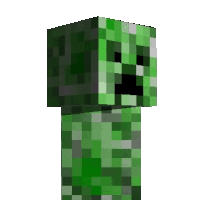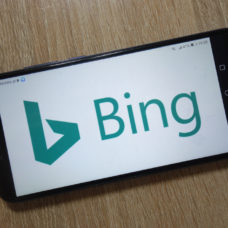Societies flourish when people can collaborate toward a common goal. Here we discuss the oft-destructive Mirai Botnet and how its creation highlights the future of collaboration.
We saw this when early humans took down woolly mammoths with the use of cooperation and organization. We also saw human collaboration give rise to the Mirai Botnet. This distributed denial-of-service (DDoS) afflicted users in France and large parts of the eastern United States.
But the Botnet wasn’t created by bad actors or malicious nation-states. What cause catalyzed three college kids to band together to create the Mirai Botnet?
Why, video games of course!

Ways to Gain Competitive Ground in Video Games
There are a great many things people do in video games to gain a competitive edge.
Some esports gamers take supplements and other drugs while others just hit the gym. But taking real-world action is not the only way people try to get ahead.
Long before Bitcoin mining was a thing, there was a guy mining coins in FIFA. In Grand Theft Auto 5, hackers could steal millions of in-game dollars from other players. One guy even made a living out of hacking video games.
But another common way that users gain an edge in video games is by using bots. Hackers do this, too, which is one reason the Mirai Botnet was just so darn effective.
League of Legends is a popular Multiplayer Online Battle Arena (MOBA) created by Riot Games. They took aim at one of the largest League of Legends bot/hacking services in court in 2016.
The Mirai Botnet DDoS event also occurred in 2016, but centered around Minecraft.

Human Ingenuity and Ambition Pairs with Internet of Things Devices
Minecraft is a sandbox building game you can play with friends. There are different cubes such as stone, wood, and others to interact with. You can build homes and structures, but there are also enemies.
Josiah White, Paras Jha, and Dalton Norman built the Mirai botnet from the “ground up”. Originally used to gain an advantage within the game, the group quickly realized the power their botnet possessed. In general, the monopolized devices in a way unique to previous botnet tactics. What they hadn’t realized, however, was just how powerful this botnet would become.
Elliott Peterson, an FBI special agent, told WIRED about Mirai. She claimed that the perpetrators: “figured out how to stitch together multiple exploits with multiple processors” In using this new strategy, Mirai crossed the 100,000 bot threshold other botnets struggled to reach.
In fact, the botnet hijacked over 65,000 devices in just 20 hours. Ultimately, Mirai infected and took control of around 600,000 devices worldwide. It did so by targeting cheaper electronics with less capable security in various countries.
A Wide net of Affected People and Devices by the Mirai Botnet
Brazil, Vietnam, China, and Colombia were among the worst affected by the attack. Liberia also came under fire in 2016 thanks to “Mirai #14” or “Shadows Kill”. The attack was so severe that the whole country was effectively disconnected from the internet.
Of course, the Mirai botnet had multiple attacks with various targets. In September of 2016, it targeted French company OVH with more than 145,000 devices and 1.1 terabits/second of traffic.
Days after this attack, the website of security reporter Brian Krebs was Mirai’s next target. The attack on Krebs’ site was so powerful that his DDoS mitigation service Akamai chose to drop him as a client due to the size and intensity of the attack.
This all has to do with how Minecraft utilizes servers and how server hosting can be lucrative in Minecraft. OVH may have been a target due to its service VAC — a Minecraft DDoS mitigation tool.
Jha, one of the creators, even tried to sell his university, Rutgers, DDoS mitigation tools after targeting Rutgers with a DDoS attack. But what happened after the creators released the source code for their progeny went way beyond Minecraft hacks.

When a pet Project Becomes a Weapon of Mass Hacking
Releasing a mass hacking tool on a hacker forum seems like a bad call. But the Mirai creators claim they did so to deflect suspicions from themselves. This backfired severely.
More than 15,000 DDoS attacks occurred in the five months following the source code release. One of those attacks targeted the domain name server Dyn in October 2016. The map above outlines the extent of the damage, shutting out millions of computer users.
It has been suggested that these subsequent DDoS attacks were gaming related, too. But we know for certain that the Mirai botnet was created to gain ground in Minecraft.
A Microcosm of Industry 4.0 Collaborative Mindset

While the result was weaponized, the fact that these college students created something so powerful for a united cause is, in a way, admirable.
Especially when you consider that Jha became interested in DDoS methods after being attacked on Minecraft himself.
Comments from Robert Coelho, chief of ProxyPipe, a Minecraft-focused DDoS protection service, further illuminated the Mirai creator’s motives.
Gamasutra reported him as saying:
“…for the server operators, it’s all about maximizing the number of players and running a large, powerful server. The more players you can hold on the server, the more money you make. But if you go down, you start to lose Minecraft players very fast — maybe for good.”
This scenario also illuminates how much of a catalyst for collaboration games like Minecraft can be.
In fact, Minecraft could signal the future coworking mindset we need. We already know that coworking spaces are the future with the launch of Amazon’s Spheres. Industry 4.0 will simply pair these spaces with the mindset to tap into humanity’s potential.

















GETTING YOUR LOST FUND RECOVERED.
I was able to get my funds recovered with the help of a recovery expert named Jeff Silbert and he helped and assisted me withdraw all my funds in full just with little effort. Contact him now if you need get his help WhatsApp. + 84 94 767 1524 Ema!l jeffsilbert39 gma!l. com.